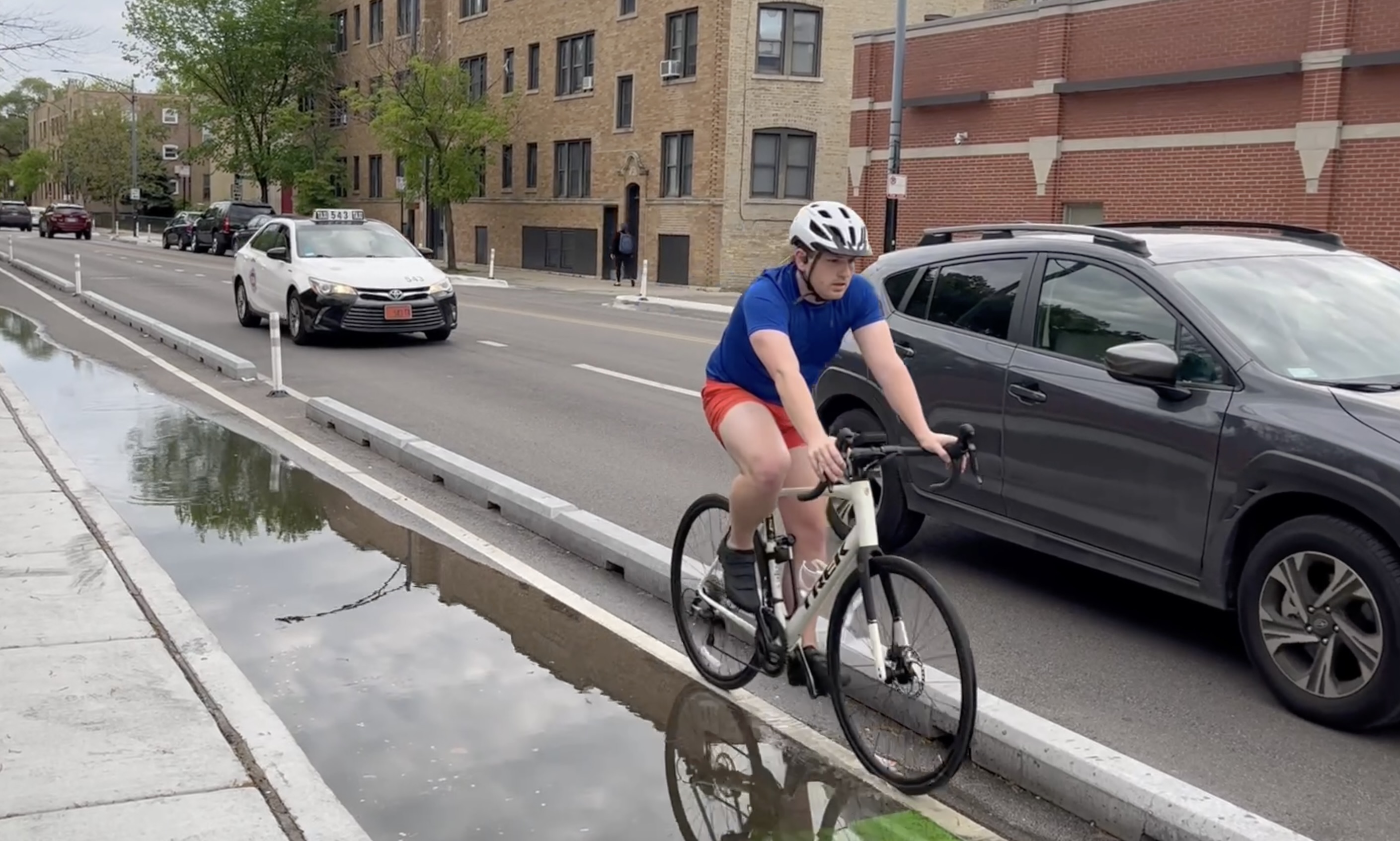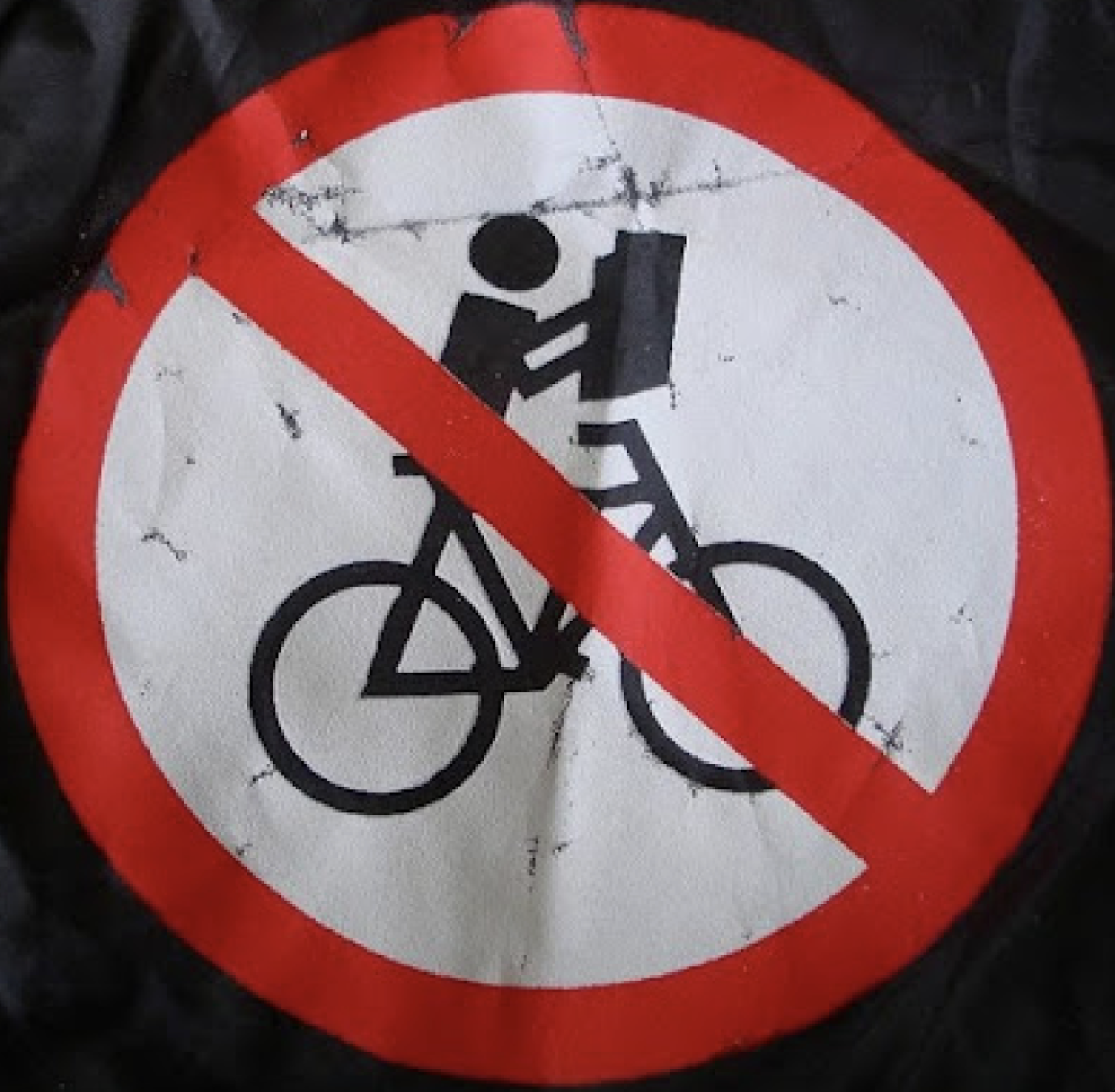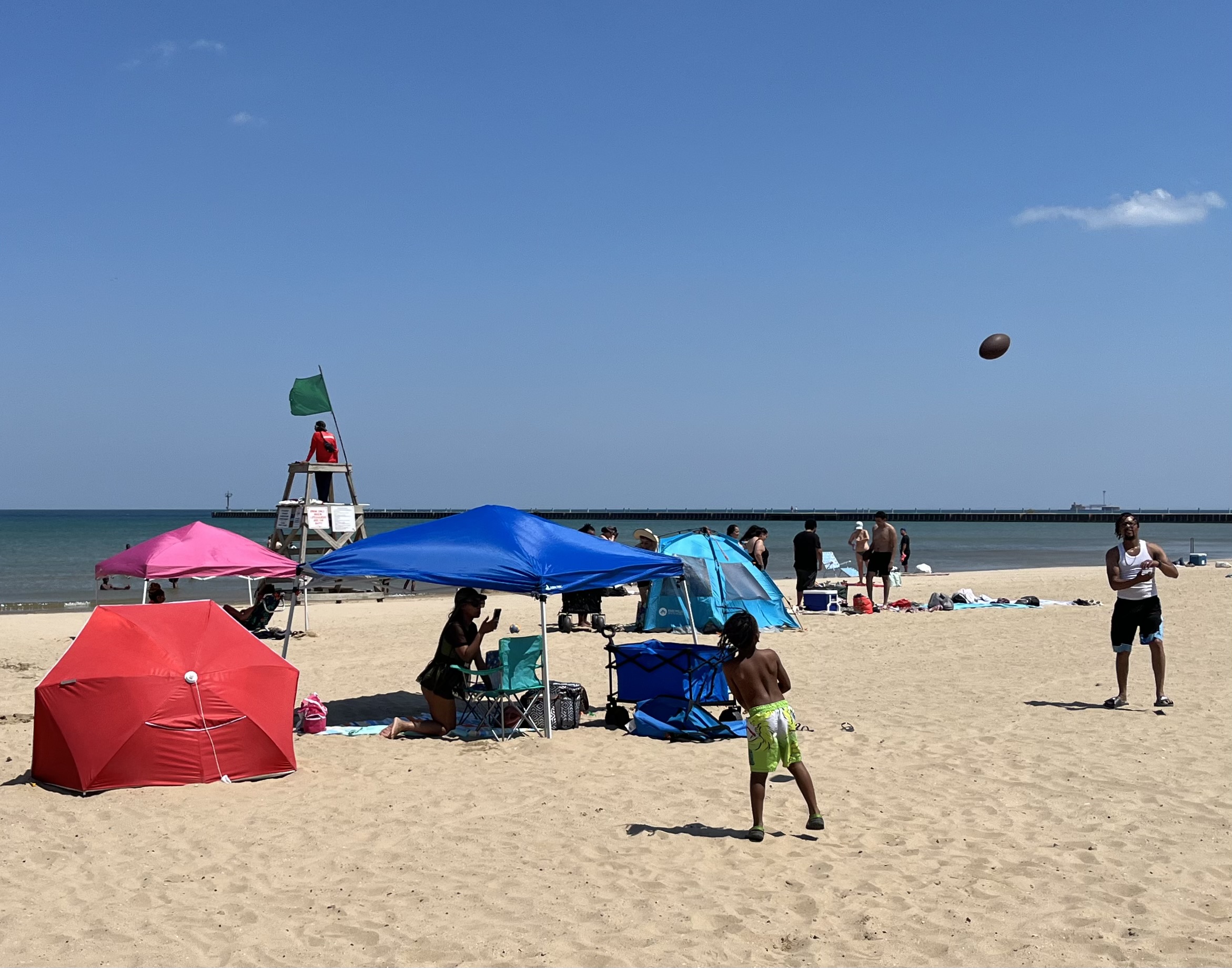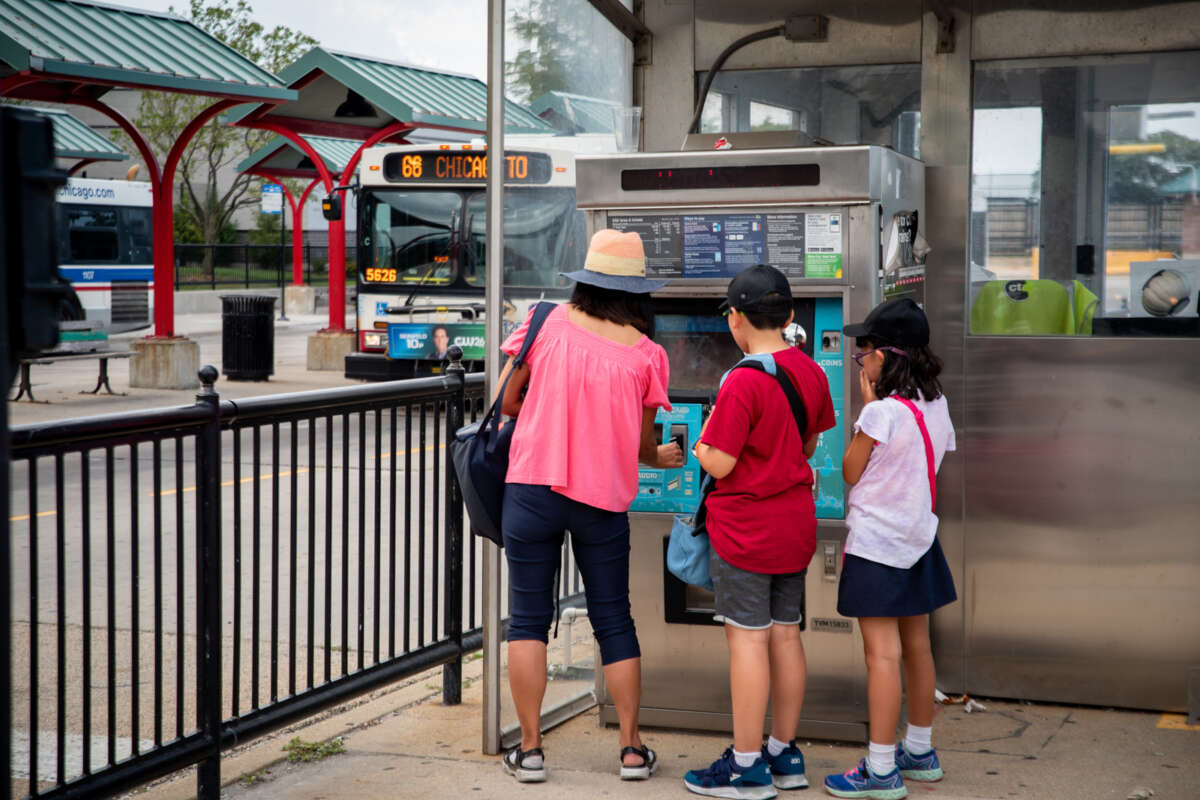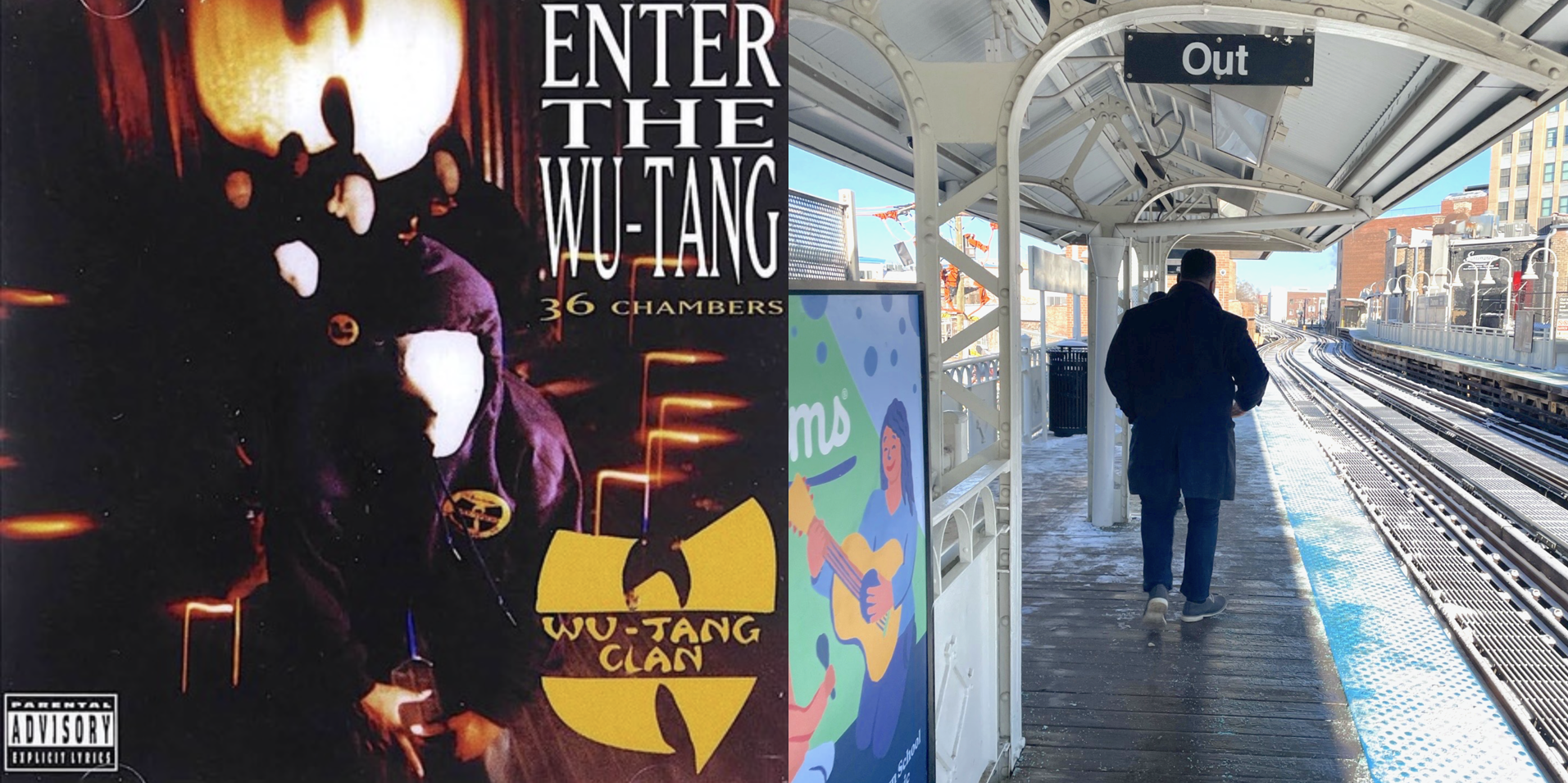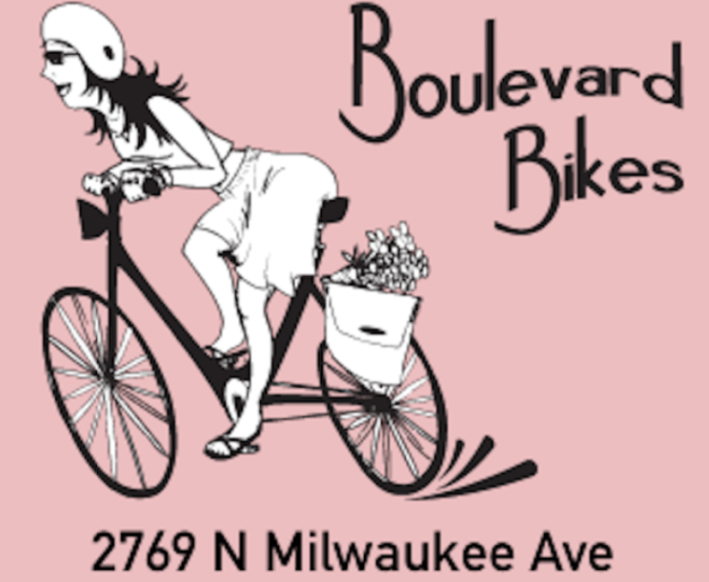
Last year the Chicago Department of Transportation did yeoman's work expanding our city's protected bike lane network. But there's a highly annoying aspect of some of the new curbside PBLs, which are generally located in the street next to the sidewalk, and protected with concrete curbs. They flood after storms, and are often barely rideable for days afterwards.
Here's a recent example from the new Milwaukee Avenue PBLs between Western and North avenues in Wicker Park-Bucktown, posted by bike-ped injury attorney Brendan Kevenides (a Streetsblog Chicago sponsor).
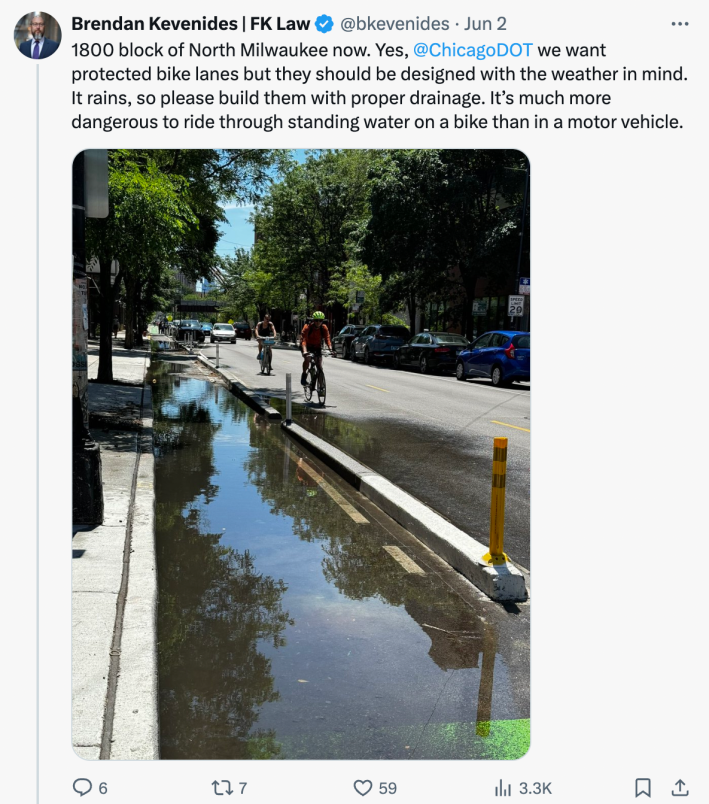
l've also noticed that flooding is a frequent problem with my local protected bikeway, the Graceland Greenway on Clark Street. It's located next to the eponymous cemetery, between Montrose Avenue and Irving Park Road on the border of Uptown and Lakeview. Just about every time it rains, the lanes flood in a couple different locations, particularly at Montrose and Clark.
Years ago the protected bike lanes on Elston Avenue between Damen and Fullerton avenues in Logan Square used to flood regularly. After bike riders complained to local alderperson Scott Waguespack (32nd), he posted on social media about going to the site and removing leaves and trash from the drains himself. So earlier this month, I gave that approach a try at Montrose/Clark.
My attempt to be the Moses (from the Bible, not Robert Moses from 20th Century NYC) of Uptown and part the waters of the Graceland Greenway at Montrose/Clark. Someone else wanna try this with a broomstick? @ChicagoDOT @AldMattMartin @46thWardChi pic.twitter.com/uPtIUKOXH4
— John Greenfield (@greenfieldjohn) May 7, 2024
Later that day I stopped by with a Hula Hoe weed cutter, which was also ineffective. During this attempt, a passer-by correctly told me the real reason for flooding at this location is "rainblockers," devices that are intentionally used to restrict the amount of water going into the city's sewer system, to prevent it from backing up. Read the City's explanation of the strategy here. And here's a 2001 analysis of that controversial program in the Chicago Tribune.
This didn't work. A guy told us Chicago intentionally shuts off these drains to keep stormwater from going into river and lake. Ald. @ward32chicago, IIRC you used to unclog Elston PBLs. Any advice? MWRD Commissioner @DanPogoFC, any intel?@ChicagoDOT @AldMattMartin @46thWardChi pic.twitter.com/Cr0F0joYYc
— John Greenfield (@greenfieldjohn) May 7, 2024
Granted, this incident shows that, while I write regularly about sustainable transportation infrastructure, water management practices are not in my wheelhouse. But I did have a couple of other takeaways from this experience.
First, contrary to the reason given for why Far South Side alder Anthony Beale (9th) recently had curb protection removed from bike lanes on Doty Avenue in Pullman, PBLs don't cause street flooding. If the aforementioned curb lanes on Milwaukee and Clark still had curbside car parking, automobiles would be sitting in inches of water after a rainstorm.
Second of all, CDOT was probably aware of the rainblockers, and the resulting bikeway flooding that would happen, when they chose to install curbside, curb-protected bike lanes in these locations. I don't mean to razz the department too hard about this design choice – these sections of Clark and Milwaukee are generally good places to ride nowadays, and the bikeways are getting lots of use.
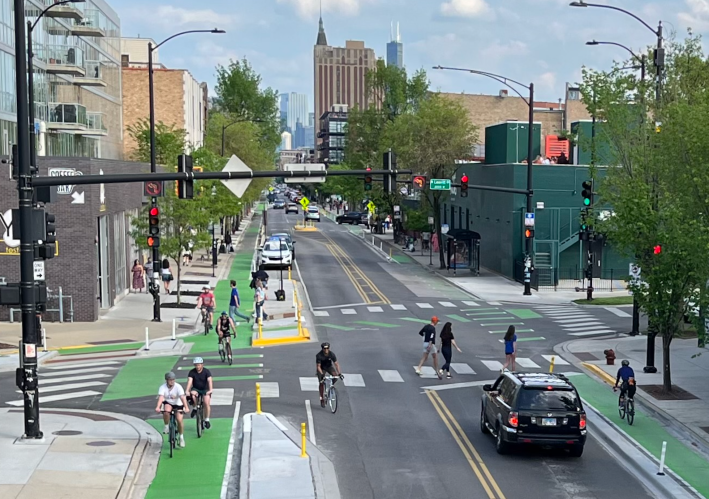
So I contacted CDOT spokesperson Erica Schroder to float the idea of making bike lanes that are raised above street level the default design choice for new Chicago bikeways. This practice is common in bicycle-friendly countries like the Denmark and the Netherlands. And in addition to preventing bike lane flooding, it helps prevent debris and garbage from collecting in the lanes.
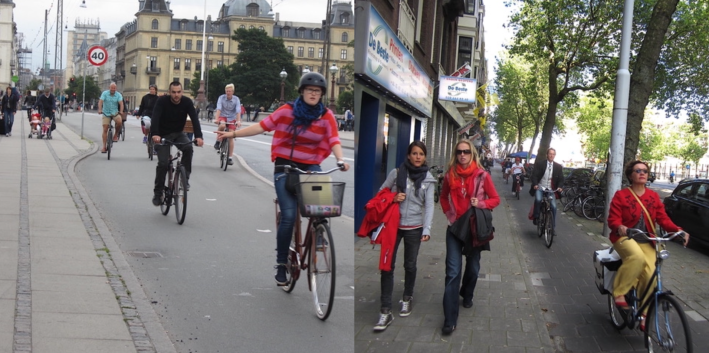
Stretches of raised bike lanes are actually becoming more common in Chicago. Heck, even parts of Milwaukee and Clark have short segments that are raised.
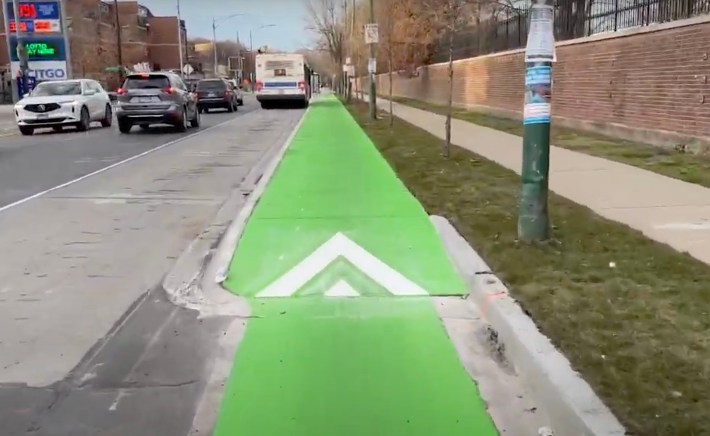
But Schroeder indicated that making raised bike lanes the default in Chicago is not yet viewed as a practical option. "Constructing raised bike lanes takes significantly longer than adding concrete protection at street level, largely because when we build at the raised level we reconstruct the entire curb and gutter and move all the catch basins," she said. "This can become a lengthy and complicated project based on the location of underground utilities."
"Not every protected bike lane project involves reconstructing the street; doing so would greatly delay the expansion of our network of protected bike lanes," Schroeder added. "However, when protected bike lanes are part of street reconstruction projects, CDOT is increasingly incorporating raised bike lanes. Current examples include several ongoing streetscape projects in South Chicago, Austin, and Pullman." See renderings below for a sneak peek of what these new bikeways are supposed to look like.
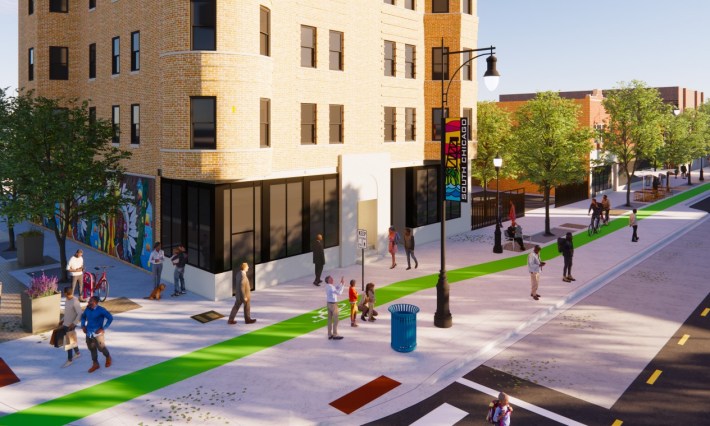
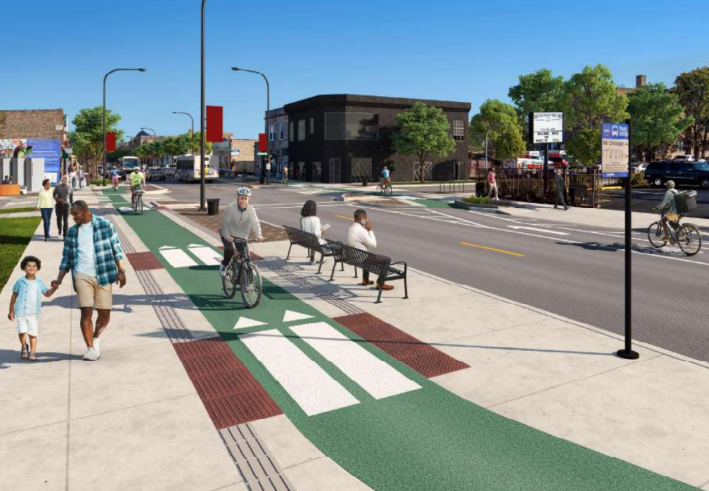
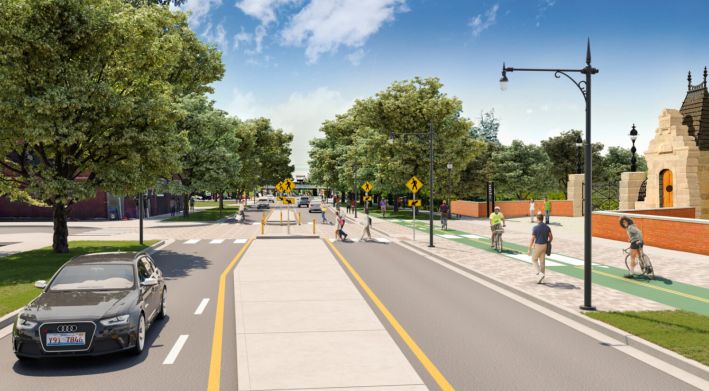
So raised bike lanes will become increasingly common as new streetscape projects are completed. On the other hand, it's worth noting that the above Austin project on Chicago Avenue between Austin and Cicero avenues, a 1.5-mile stretch, only has a short segment of raised bikeway, arguably a missed opportunity.
So it's important for residents who want raised bike lanes in their neighborhoods to show up to public meetings on streetscapes, and voice support for raised bikeways. Because once CDOT rebuilds the corridor, there may not be another opportunity to add raised bike lanes for many years.
Meanwhile, what can we do about existing curb-protected bike lanes that flood regularly? Interestingly, shortly after Kevenides tweeted about the flooded Milwaukee Avenue bikeway, it was drained. Perhaps one of the powers that be (that location is in Ald. Waguespack's ward) noticed his complaint and ordered someone to open a rainblocker?
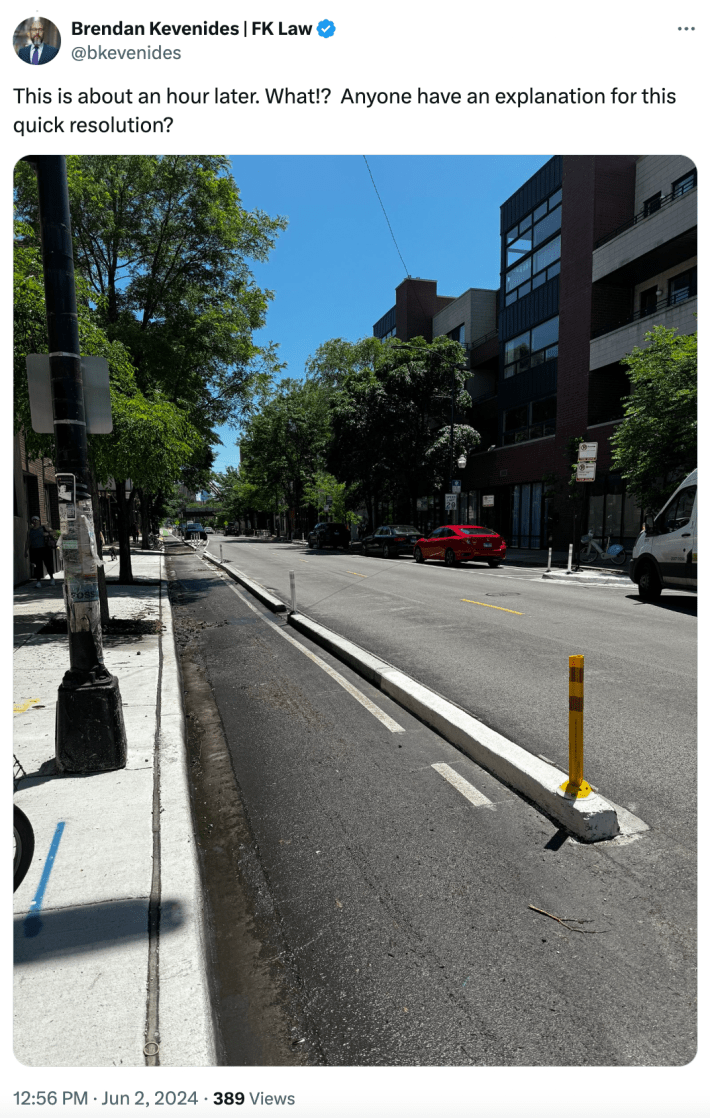
At any rate, the next time you notice a flooded curbside protected bike lane, why not file a 311 service request, and contact the local alderperson and/or the Metropolitan Water Reclamation District of Greater Chicago? You could also tag the authorities in a social media post to spread the word about the problem.
If enough people who bike make noise about this issue, maybe we can get flooded bikeways cleared promptly. That would be a lot more useful that just posting tweets referencing the "Who's the U-boat commander?" scene from "Risky Business".

Did you appreciate this post? Please consider making a tax-deductible donation to support Streetsblog Chicago.
